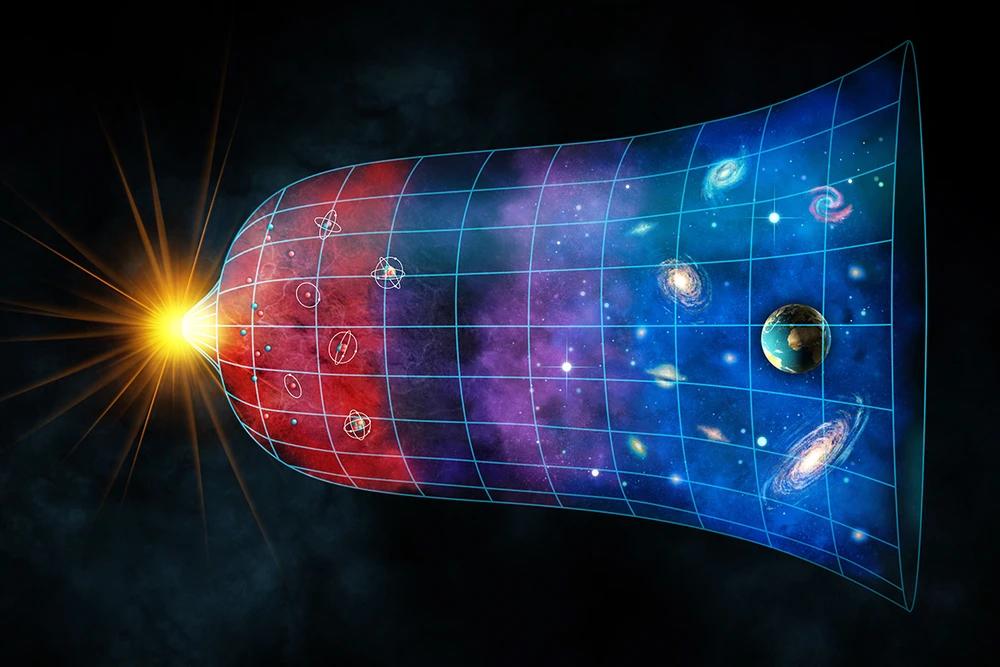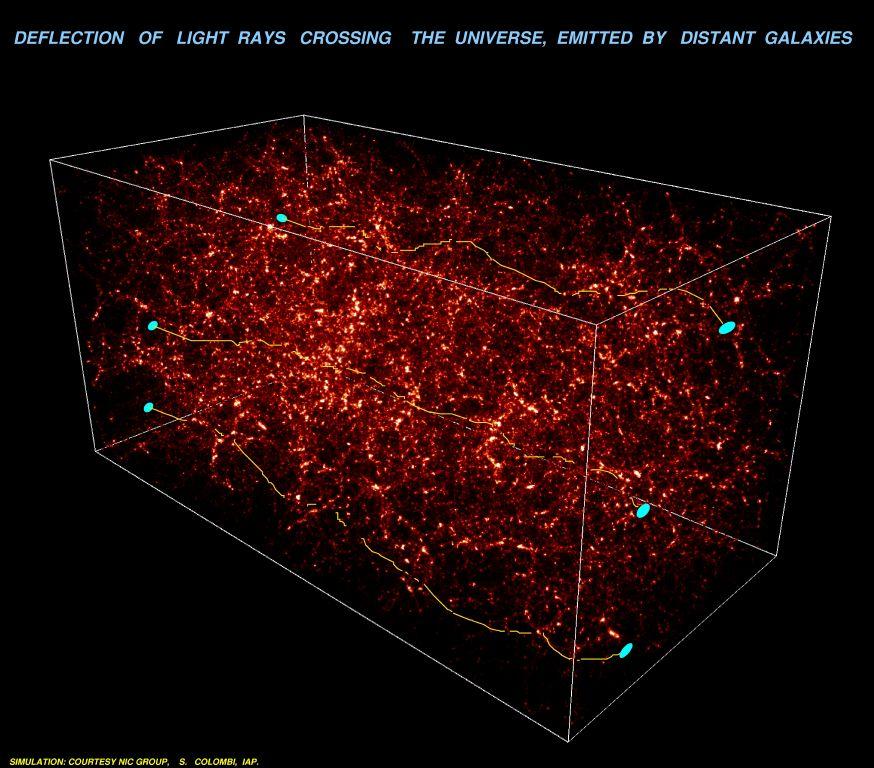Cosmology and dark energy
At a glance
- Astronomers want to work out what is causing the expansion of the Universe to accelerate
- The SKA telescopes will help us to better understand the mysterious dark energy, the term given to the unknown force thought to be behind this acceleration
- By studying how distant galaxies in the young Universe fell into clusters, astronomers can measure the strength of dark energy

Cosmology is the study of the origin and fate of the Universe. Our Universe is expanding, and, thanks to observations from the Hubble Space Telescope in the late 1990's, we have discovered that this expansion is accelerating. One of the main science goals of the SKA telescopes is to investigate why this acceleration is taking place, and test the theory that a force named dark energy is responsible.
Before discovering that the Universe is actually expanding faster and faster, astronomers had thought that it should be slowing down due to the mutual gravitational attraction of galaxies, eventually ending up in what is known as the Big Crunch. Instead, it seems that the Universe is driven by another component - dark energy - which appears to work against and even surpass the mutual gravitational attraction, causing the expansion to accelerate.
This effect could also mean that there are gaps in our understanding of gravity, as described by Einstein's General Theory of Relativity.
Dark energy is estimated to make up around 68% of the Universe, alongside dark matter (27%) and “normal” matter (just 5%), so understanding its nature and its role in the Universe is key to cosmological studies.
The SKA telescopes will help to shed light on what dark energy could be.
Clues from distant galaxies
One way to learn more about dark energy is through wide area galaxy surveys which can measure its effects. Hydrogen, the raw material from which stars form, is the most basic and abundant element in the Universe, producing radio emission at a wavelength of 21cm or a frequency of 1420 MHz. By detecting this emission, and thanks to their unrivalled sensitivity, the SKA telescopes will be able to map the distribution of hydrogen throughout the cosmos and track young, newly forming galaxies at the edge of the known Universe.
By conducting extremely large surveys of galaxies, astronomers will sample a large enough volume in the Universe to detect relatively subtle effects. Measuring precise galaxy redshifts is key to such studies.
Redshift explained
Hydrogen emits radio waves with a wavelength of 21cm, but if radio waves have been emitted by a distant galaxy, it takes time for them to arrive and be observed here on Earth. During that time the Universe expands, which "stretches" the wavelength. We call this effect "redshift".
Astronomers typically measure the velocities of very distant galaxies from the redshifted frequencies of their atomic and molecular spectral lines, which act as the "finger print" of a particular atom or molecule.
The redshift measurement not only tells astronomers the velocity at which a galaxy is moving away from us, but also serves as an estimate of its distance. The difference between the observed wavelength and expected wavelength is used to measure how far away the galaxy is, and how much time has elapsed since the light was emitted.
By making redshift measurements for a large number of galaxies, astronomers can create a 3D map of the Universe and see how the large scale structure has evolved over time. This is key to studying the impact of dark energy on the expansion of the Universe.
Measuring redshifts for a large sample of galaxies enables astronomers to track how those galaxies form into clusters. This process is partly a balancing act between gravity, which causes galaxies to fall together, and dark energy, which acts to separate them. Observing the size of clusters and how rapidly they form is a measure of the strength of dark energy, and that can help astronomers to better understand what it is.
Using galaxies as giant lenses
Another tool which radio astronomers have at their disposal for studying cosmology and dark energy is a technique called "weak gravitational lensing", observing the gravitational effects of galaxies and clusters of galaxies on radio waves as they pass through the Universe.

Concentrations of mass have the effect of disturbing the path that radio waves take to the Earth. That means if there is one galaxy behind another galaxy, or behind a cluster, the shape of the background galaxy will appear distorted, because the path(s) of its radio waves have been distorted by the foreground galaxy or cluster. In effect, the foreground galaxy is acting as a giant lens in space.
By measuring the amount of distortion, astronomers can infer how much mass (both regular matter and dark matter) is between the background galaxies and us, and also measure how this mass is distributed. Mass distribution can be affected by the properties of dark energy and aspects of cosmology, so measurements of the shapes of large numbers of galaxies can be invaluable.




